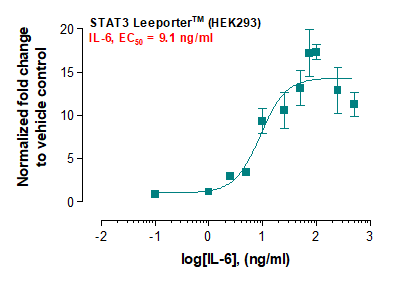Recombinant human CD48 protein with C-terminal human Fc

Figure 1. Human CD48 Protein, hFc Tag on SDS-PAGE under reducing condition.
Roll over image to zoom in
Shipping Info:
For estimated delivery dates, please contact us at [email protected]
| Amount : | 50 µg |
| Purification : | The purity of the protein is greater than 95% as determined by SDS-PAGE and Coomassie blue staining. |
| Content : | Lyophilized from sterile PBS, pH 7.4. Normally 5 % - 8 % trehalose is added as protectants before lyophilization. |
| Storage condition : | Store at -80°C for 12 months (Avoid repeated freezing and thawing) |
| Alternative Name : | CD48, BCM1, SLAMF2, BLAST, BLAST1, MEM-102, TCT.1, BCM-1, SLAMF-2, BLAST-1 |
Expression Host : HEK293
The protein has a predicted molecular mass of 48.5 kDa after removal of the signal peptide.The apparent molecular mass of CD48-hFC is approximately 55-70 kDa due to glycosylation.
This gene encodes a member of the CD2 subfamily of immunoglobulin-like receptors which includes SLAM (signaling lymphocyte activation molecules) proteins. The encoded protein is found on the surface of lymphocytes and other immune cells, dendritic cells and endothelial cells, and participates in activation and differentiation pathways in these cells. The encoded protein does not have a transmembrane domain, however, but is held at the cell surface by a GPI anchor via a C-terminal domain which maybe cleaved to yield a soluble form of the receptor. Multiple transcript variants encoding different isoforms have been found for this gene.
The protein has a predicted molecular mass of 48.5 kDa after removal of the signal peptide.The apparent molecular mass of CD48-hFC is approximately 55-70 kDa due to glycosylation.
This gene encodes a member of the CD2 subfamily of immunoglobulin-like receptors which includes SLAM (signaling lymphocyte activation molecules) proteins. The encoded protein is found on the surface of lymphocytes and other immune cells, dendritic cells and endothelial cells, and participates in activation and differentiation pathways in these cells. The encoded protein does not have a transmembrane domain, however, but is held at the cell surface by a GPI anchor via a C-terminal domain which maybe cleaved to yield a soluble form of the receptor. Multiple transcript variants encoding different isoforms have been found for this gene.
|
There are currently no product reviews
|













.png)












